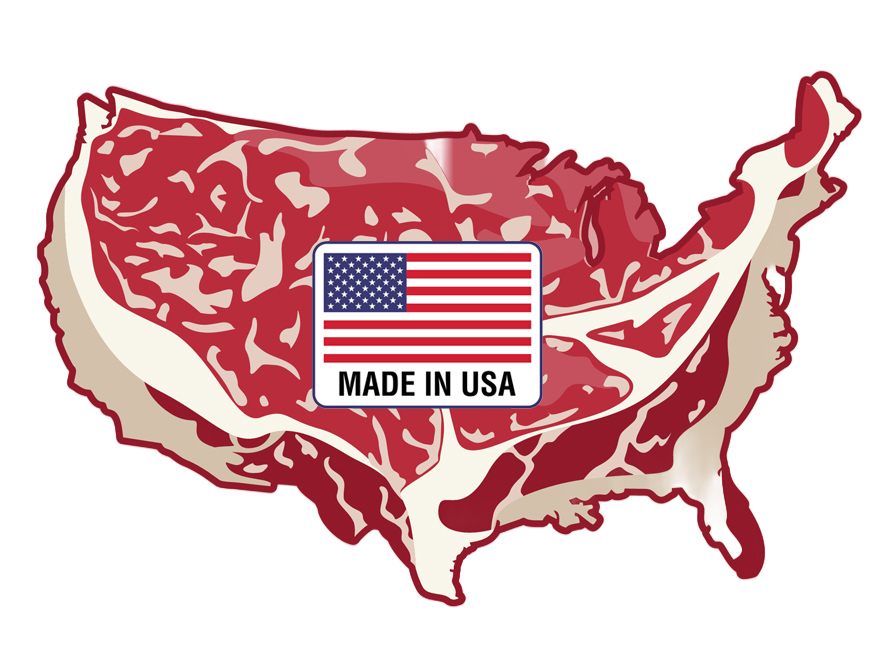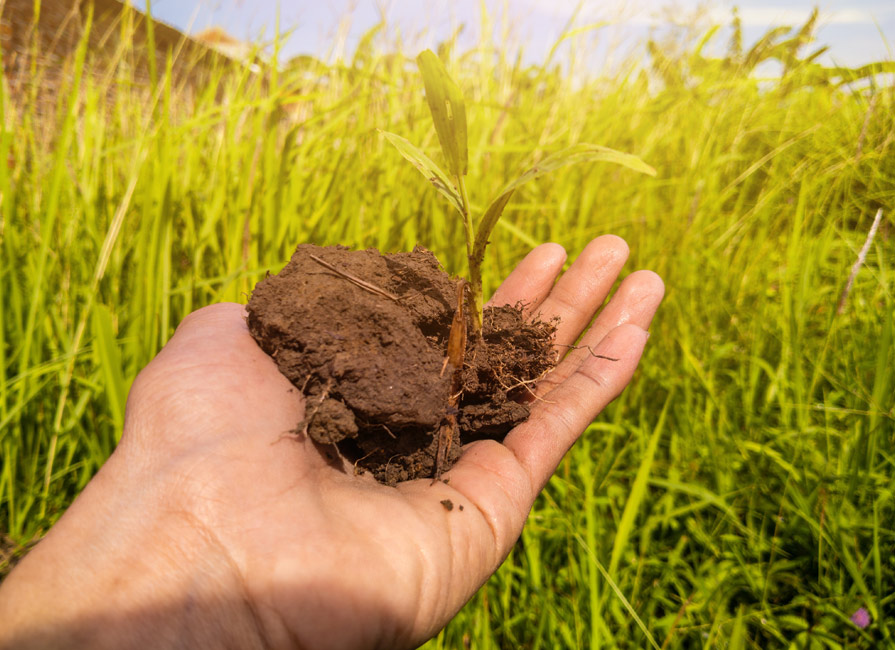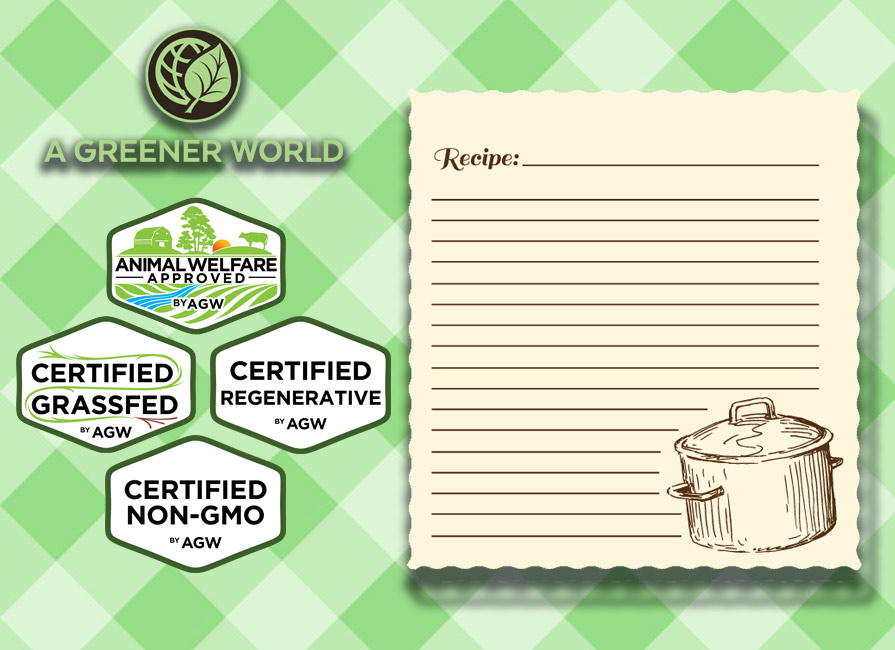In today's increasingly food-conscious world, consumers expect a label to mean what it says—including the…
The Bigger Picture
 A couple of opinion pieces that appeared within days of each other have recently caught my eye. First was “Grass-fed beef packs a punch to environment” by Dr. Gidon Eshel (Reuters Blog), swiftly followed by “The myth of green beef” (Atlantic Blog), by Helene York. Both pieces swim rather vigorously against the scientific tide on the issue of the environmental impact of beef and grassfed cattle systems in particular.
A couple of opinion pieces that appeared within days of each other have recently caught my eye. First was “Grass-fed beef packs a punch to environment” by Dr. Gidon Eshel (Reuters Blog), swiftly followed by “The myth of green beef” (Atlantic Blog), by Helene York. Both pieces swim rather vigorously against the scientific tide on the issue of the environmental impact of beef and grassfed cattle systems in particular.
The issue of environmental impact and meat production is a complicated one and open to misinterpretation and confusion. See our past blog, Beware of Bad Science. With my obvious interest in grassfed and pasture-raised production I am always looking to see what new evidence is being presented. After reading both pieces, however, I was left feeling rather disappointed.
These articles are interesting, but they are interesting for all the wrong reasons. While they appear to put forward a strong argument, with independent studies mentioned, if not always actually referenced, they actually expose the problems of scientific reductionism and a general lack of academic rigor.
Helene York’s piece does not make much of a distinction between beef production methods. According to her, from a global warming perspective, all beef is bad. One of her references is a 2006 study by Gidon Eshel and Pamela Martin, “Diet, Energy and Global Warming,” which compared industrially produced meat to a vegan diet in terms of greenhouse gas emissions (GHG). Eshel’s more recent article focuses on the alleged negative environmental impact of grassfed beef.
York’s contention is that beef is:
“The Hummer of foods—an excessive contributor to environmental ills including climate change, nitrogen blooms, pollution, and depletion of Midwestern aquifers—not to mention E. coli contamination that has sickened and scared thousands.”
Regular readers of our blogs will recognize that we too are aware of the environmental and E. coli risks of feedlot beef. But while it may not be obvious to York, it is clear to others that there is a world of difference between feedlot beef and pastured beef and the environmental, health and welfare implications of each system.
Dr. Eshel does recognize the difference between grassfed beef and feedlot beef but by his account grassfed comes out far worse than feedlot beef. I was pleased to see that Eshel understands that the meat of a “healthy thriving animal is clearly nutritionally superior to the biochemically compromised, microbiologically teeming ecosystem that is the bulk of the nation’s meat supply.” I was also pleased to read that, along with one or two farmers out there, Eshel is well aware of the unique ability of the ruminant to convert forage and other cellulose-rich foods into usable nutrients. As he says, “if it weren’t for the absorption of glucose liberated by bacteria mediated cellulose breakdown inside ruminant bodies, most of this energy would have bypassed the animal kingdom altogether.” So what is his problem with grassfed?
Well, when compared to meat from corn-fed cattle, Eshel argues that meat from grassfed cattle is more–not less–greenhouse gas intensive. He argues that grassfed animals emit two to four times as much methane (a potent greenhouse gas) compared to the more “efficient” corn and soya-based diet of feedlot cattle. This is because the non-forage diet is mostly simple sugars, which requires no rumination for digestion.
Eshel argues that the higher methane emissions of grassfed cattle, combined with the faster weight gain by feedlot animals, result in significantly higher greenhouse gas emissions per pound of meat by grassfed animals than by feedlot ones. He also argues that grazing animals produce “at most a quarter of the calories per acre typical plant based production systems do” and that, ultimately, “grass-feeding produces unnecessary low-quality calories at ostentatious environmental costs while displacing threatened wildlife.”
On face value, he makes a seemingly strong case. Grassfed cattle produce more methane than corn-fed cattle; they grow more slowly and are therefore more “inefficient” when compared to cattle fed a corn-based diet. As a result, they represent an inefficient use of land which could be used to grow corn for feedlot cattle systems.
However, there is one particularly big hole in Dr. Eshel’s argument – which is particularly surprising given that he was once a cattle farmer in Israel. This hole in the argument also applies to Helene York’s contention that there is little difference between grassfed and feedlot cattle. The point is this: while the grassfed cattle are busy munching the grass, the feedlot cattle are busy munching… corn and soya. This corn and soya is rather heavily reliant on regular applications of… nitrogen fertilizers and other agrochemicals. And nitrogen fertilizers and other agrochemicals are produced using… you guessed it…fossil fuels.
According to David Pimentel, a Cornell ecologist who specializes in agriculture and energy, a typical steer will in effect consume 284 gallons of oil in its lifetime. Why? Because the corn we feed to our feedlot cattle requires artificial fertilizer and other agrochemicals, which require staggering amounts of fossil fuel energy to produce. And what about the growing body of scientific evidence which points to the benefits that grassfed farming systems offer in terms of soil carbon sequestration, and how the grazing process helps to the build the levels of organic matter in the soil, storing carbon in the process? Just two issues directly related to the climate change debate that both York and Eshel’s articles fail to even consider. But there are countless other aspects of the grassfed debate which fall outside of both their views on the issue.
For example, what about the animal welfare issues associated with feedlot production? What about the fact that although the corn may indeed make the cattle grow much more “efficiently,” cattle are “designed” to convert forage, and not copious quantities of grain? We know that when cattle arrive at feedlots, the change from a forage-based diet to the unnatural corn-based diet (intended to fatten them as fast as possible) must be managed carefully to avoid serious diet and digestive-related problems like acidiosis (a serious form of bovine heart burn which can lead to diarrhea, ulcers, liver disease and a general ill health) and “feedlot bloat.” Feedlot bloat is a major cause of sudden death in feedlots. It occurs when the diet contains too much starch and too little roughage, which affects the normal operation of the rumen, preventing the natural expulsion of gas (burping). As a result, the rumen literally inflates like a balloon–often very quickly –compressing the animal’s lungs and other internal organs. If the animal is not treated swiftly it can literally suffocate to death.
What about the routine diet of antibiotics used on feedlots to prevent the outbreak of diseases which would otherwise run riot among the immunologically weakened animals living in closely confined conditions? What about the routine feeding of low levels of key antibiotics to “promote growth” and which is leading to the development of antibiotic resistant bacteria–meaning that essential antibiotics are fast becoming useless in the treatment of life-threatening human diseases, such as MRSA?
What about the human health implications of the corn-based cattle diet? York mentions E. coli as an issue of beef in general. But what about the fact that feeding corn creates an unnaturally acidic environment in the cattle’s digestive system which results in the growth of acid loving–and human health threatening–bacteria in the cattle’s gut, such as E. coli 0157:H7? We know that when these bacteria are exposed to low doses of antibiotics throughout the cattle’s life they can develop resistance and become “superbugs,” so when the bacteria are inevitably transferred to meat during the slaughter process, and a food poisoning outbreak occurs, the usual drugs no longer work. What about the financial cost of the regular resulting mass beef recalls and the associated human costs for those who are affected?
What about the nutritional advantages of grassfed beef? The fact that, when compared to feedlot beef, it contains far higher levels of nutritionally desirable fatty acids, higher levels of vitamin E and much higher levels of conjugated linoleic acid (CLA) – a nutrient associated with lower cancer risk?
What about the environmental pollution associated with factory farms? Not to mention the cost of “storing” the millions of tons of manure produced by these feedlots? While grassfed farmers rely on the more modest levels of manure produced by their cattle in order to help maintain the natural fertility of their soils, feedlot farmers see it only as waste.
Science is a vital tool in unraveling the vast complexities of climate change, and the science is changing all the time. By all means, scientists should present their research and contribute to the debate. But while Eshel and I might agree on the need to cut down on our general meat consumption, and York and I might agree on the need to support better quality meats, unfortunately, the case each puts forward isn’t new; it’s based entirely on existing scientific research, much of which is highly contested. But what these articles really highlight is the fact that it really isn’t helpful to only consider one section of the full chain of production while ignoring other very significant areas of the debate.



